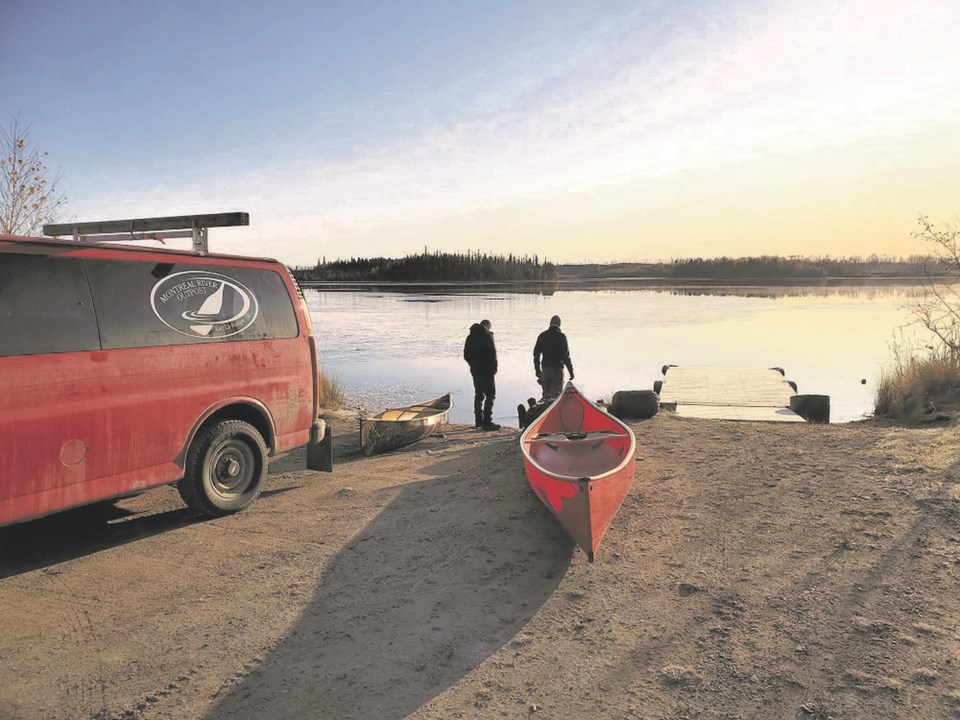Avid canoe racers, enthusiasts, and hunters who are looking for a canoe that outshines that rest don’t need to travel too far.
Martin Bernardin, a former engineer, makes the most technologically advanced canoes in the world — and they’re more environmentally friendly. These incredibly light canoes can be found at the Montreal River Outpost in Air Ronge, which is conveniently located right beside Lac La Ronge.
Bernardin was an engineer at McClean Lake while also running the Montreal River Outpost on his weeks off when he and his wife decided to choose one to dedicate their full time to.
“It started out as a canoe manufacturing business,” said Bernardin. “We had some shop space left over and we decided, ‘Well, maybe we should open an outdoor retail store at the same time.’ Provide service to the people here and the tourists that come up here the opportunity to buy quality gear and be able to rent canoes, kayaks, and paddle boards… I used to be an engineer up at McClean Lake… I was kinda running both business- like, my full-time job plus running the business part-time, on my weeks off and at one point we just had to make a decision which way we wanted to go.”
With some mines closing down and the summer tourism in La Ronge, it may be easy to say that Bernardin made a good choice to work full-time at his business.
With an area just a little over 1400 kilometers squared, watersports are quite popular with locals and tourists alike.
Bernardin and friends took 10 hours off the voyager canoe record in the 715-kilometer Yukon River Quest using his design process that takes advantage of aerospace materials.
“We build here some of the most technologically advanced canoes that you can buy anywhere in the world.” Bernardin said. “We basically use aerospace processes and aerospace materials to create, like I said, the most technologically advanced canoes anywhere.”
Bernardin and his wife also own Kissynew Canoe, also located in La Ronge, which manufactures the canoes built for the Montreal River Outpost and other retailers.
Bernardin had been building canoes since 2005, while living in Saskatoon when they decided to come to the north and found a space for the shop.
So, we now know that Bernardin uses aerospace technology to make these light, advanced canoes, but how exactly does he do that?
He explains:
“We could take these canoe molds here, take them out of the shop and bring rocket ship molds in and using the same technology, using the same materials, start building rocket ships,” said Bernardin.
“How this process works, this is a mold here, what we do is- all our canoes are fabricated using carbon fiber, Kevlar, and other aerospace-type stuff, which starts out as fabric on the wall. And so, we roll it out onto the table, cut it into pieces and then stick it into the mold. Once all the material is laid in and in a typical canoe that we build here, there’ll be between 22 and 30 pieces of material that typically go into the building of a boat. And everything is laid in here (the mold) dry, which is different than a typical fiberglass-type shop where you put one layer of material in, you wet it out, put another layer of material, wet it out and you’re under the gun to get everything wetted out as quickly as you can before the resin starts setting up… Once we’ve got all the materials laid in there dry and it’s kinda held together using a tack spray, which is kinda like an industrial hairspray that just kinda keeps everything from falling apart and falling down. We will then run a piece of spiral wrap down the bottom and we run another piece of spiral wrap around the perimeter and then we seal this whole thing into a plastic bag.
“The spiral wrap runs around the perimeter will come out of the plastic bag and get connected to a vacuum pump. We put this whole thing under vacuum, suck the materials down so now the materials are all fully compressed with no air voids inside of them. The spiral wrap around the bottom will come out of the bag and into a pot of resin, so then when we’re ready, this’ll have a valve on it, we open the valve and the vacuum pressure will actually suck the resin down into the bag, down the spiral wrap and the resin will start fusing out the crack in the spiral wrap and work its way out the bottom of the boat up to the vacuum point at the top, and so this is a process called vacuum infusion.”
Bernardin doesn’t use cheap resin either, he uses epoxy resin which has less VOCs (Volatile Organic Compounds), which leaves the shop with just a faint citrus smell rather than a strong industrial smell and which is more environmentally friendly.
Bernardin has shipped canoes all over Canada, as far as Texas in the U.S and to the United Kingdom.



